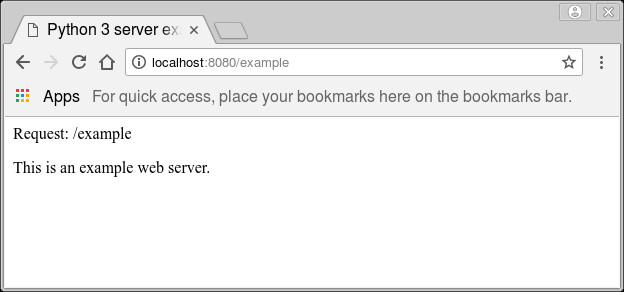Python provides straightforward ways to set up a web server, whether you need a quick solution or a more customized approach. You can launch a basic web server with a single command, or build a custom server to handle specific functionalities. This article will guide you through both methods for creating a web server using Python. These servers can be accessed on your local network, including localhost and other network hosts, and can even be made accessible across locations using a VPN.
Utilizing Python’s Built-in Web Server
For quickly sharing files or testing web content, Python has a built-in web server module. Starting this server is incredibly simple.
Simple Command to Start Server
Execute the following command in your terminal:
python3 -m http.serverThis command immediately starts a web server on port 8080. You can access it by opening your web browser and navigating to http://127.0.0.1:8080/.
The server is also accessible to other devices on your local network using your machine’s IP address (typically in the format 192.168.-.-). By default, this server allows you to download files from the directory where you launched the command, making it a convenient tool for local file sharing.
Creating a Custom Web Server in Python
For applications requiring specific behaviors or more control over server functionality, you can create a custom web server using Python. This involves leveraging Python’s HTTP libraries to define how the server handles requests.
Code Example and Explanation
Below is an example of a basic custom web server in Python. This server will respond to GET requests and display a simple webpage.
from http.server import BaseHTTPRequestHandler, HTTPServer
import time
hostName = "localhost"
serverPort = 8080
class MyServer(BaseHTTPRequestHandler):
def do_GET(self):
self.send_response(200)
self.send_header("Content-type", "text/html")
self.end_headers()
self.wfile.write(bytes("<title>https://pythonbasics.org</title>", "utf-8"))
self.wfile.write(bytes("<p>Request: %s</p>" % self.path, "utf-8"))
self.wfile.write(bytes("<body>", "utf-8"))
self.wfile.write(bytes("<p>This is an example web server.</p>", "utf-8"))
self.wfile.write(bytes("</body>", "utf-8"))
if __name__ == "__main__":
webServer = HTTPServer((hostName, serverPort), MyServer)
print("Server started http://%s:%s" % (hostName, serverPort))
try:
webServer.serve_forever()
except KeyboardInterrupt:
pass
webServer.server_close()
print("Server stopped.")Save this code to a Python file (e.g., custom_web_server.py) and run it. Like the built-in server, it will be accessible on port 8080. When you access a URL like http://127.0.0.1:8080/example, the do_GET() method in the MyServer class is executed.
 Python web server example demonstrating a custom server implementation using Python code
Python web server example demonstrating a custom server implementation using Python code
In this code, self.path captures the requested URL path from the browser (e.g., /example in the example URL). The server responds with a basic HTML page constructed within the do_GET method. This demonstrates the fundamental structure for handling GET requests in a custom Python web server.
Conclusion
Python simplifies the process of setting up web servers, offering both a quick built-in option and the flexibility to create custom servers. Whether you need a simple file server or a foundation for a more complex web application, Python provides the necessary tools to get started quickly.
